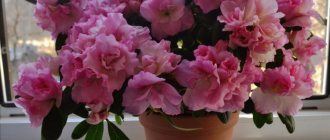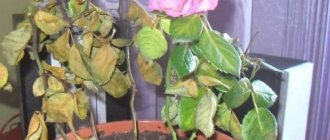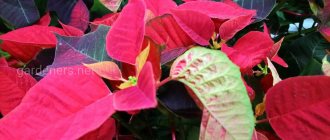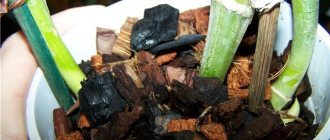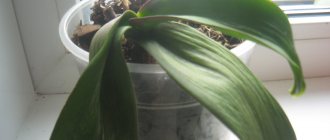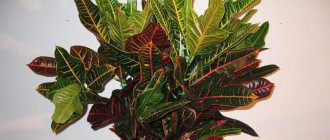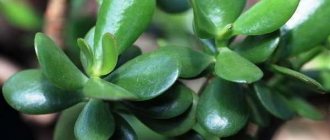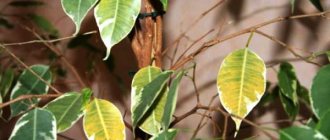The magnificent ornamental plant Schefflera is a tropical evergreen plant - exotic, cozy and homely and very popular lately. Found in the distant latitudes of Asian, African and American lands, this bright representative of the Araliaceae family with monochromatic lush green or variegated leaves, having the unusual shape of an open, holey umbrella, has firmly entered our homes, creating a warm and lovely atmosphere in them. Therefore, when the leaves of the sheflera fall off, we begin to frantically search for the causes of its disease and ways of treatment. Let's talk about this exotic plant, its requirements and conditions for successful growth.
Schefflera: care, types
Named after the German biologist Jacob Scheffler, representatives of the Araliaceae are shrubs, trees and vines, reaching various lengths in natural conditions (from 1.5 to 40 meters). All of them have characteristic compound leaves, dissected into 4-12 lobes and resembling a palm with outstretched fingers. Schefflera is also called the umbrella tree. In the wild, the plant blooms and bears fruit beautifully, but as an indoor crop it pleases the eye only with generous, magnificent greenery.
Leaves fall off after transplanting
Yellowing of schefflera often occurs when moved to another pot. If it was a full-fledged transplant with exposed roots, the operation rarely goes without leaf fall. But owners also make mistakes.
Priming
The substrate for shefflera should be slightly acidic or neutral. The best solution is to buy a ready-made one, intended for ficus or ornamental deciduous crops. When preparing a soil mixture yourself, it is not always possible to fully disinfect the components or select them correctly. As a result, the shefflera turns yellow and drops its leaves.
- alkaline reaction or too high acidity of the soil;
- soil pests - even earthworms that fall into a pot turn into them;
- dense substrate - the roots do not receive enough oxygen, the water stagnates, it is difficult to care for the shefflera;
- poor permeability of components.
Often the soil becomes salty from watering with hard water. The white crust on the surface can be removed. If plaque covers the walls of the pot, the soil will have to be changed.
Pot
The container for shefflera needs a regular shape and must contain holes for water drainage. Otherwise, the substrate will constantly become soaked.
With each transplant, the size is increased by 2-3 cm. A pot that is too large will not only cause a stunting of growth. The roots need to braid a ball. If there is a lot of free space, this will take considerable time; the plates of the shefflera will begin to turn yellow and fall off. Leaf fall will stop when the flower has covered all the soil.
A container that is too small and filled only with roots and soil residues does not hold water well; when fertilizing, the underground part often gets burned by fertilizers. The result is that the foliage turns yellow and falls off.
Transfer time
Any movement to a new container is associated with injuries to the sucking processes. Even transshipment. The root system regenerates in the same way as other parts of plant organisms. If the transplant is done at the end of the season, the process is slow, the foliage turns yellow and falls off, and when the injury affects the main roots, the shefflera may even die.
In the summer she has already spent a lot of effort on building up green mass. In addition, heat negatively affects the general condition of the flower; only it can cause leaf fall. Excessive injury will make the situation worse.
Transplants should be done at the beginning of the growing season.
Planting process
It is best for the sheffler to pass without destroying the earthen clod. This way the roots are minimally damaged, and the suspension of growth processes often goes unnoticed.
The more damaged the underground part is, the more time it takes to recover. The Schefflera root system spends energy on regeneration, and is not able to feed all the vegetative organs; some of them turn yellow and fall off.
How to care for sheflera: lighting
The most important condition for proper care of the cheflera is the correct choice of place with the required illumination intensity. The plant should be placed in the brightest place in the room. A window sill facing east or west can be considered successful. The north side is not the best option for a plant with variegated foliage. The lack of light will affect the decorativeness of the pattern; it will not be pronounced enough. But on a windowsill facing south, the crop will be uncomfortable and hot. The blinding bright sun can significantly damage the plant, leaving burns on the leaves.
Schefflera (holey umbrella) loves high levels of illumination, but does not accept direct sunlight. In a room facing south, the container with the plant must be placed on a stand near the window so that there is enough light, but the sun's rays do not fall on it. A location far from the window, for example, in the back of the room, can have a bad effect on the development of the plant - in this case, the leaves of the sheflera often fall off. The reasons may also lie in poor lighting.
Error correction
Everything is not as terrible as described in the previous chapter. Dangerous in themselves:
- overflow;
- excessively large or loose pot;
- contaminated or “wrong” soil, such as alkaline or impermeable soil.
Other reasons why Schefflera leaves turn yellow, dry out, become covered with brown spots, or fall off are usually caused by several factors. Of course, if you don’t take it to extremes:
- temperature above 30°C or below 12°C;
- differences - more than 20° C during the day, about 10° C at night;
- Schefflera does not receive light at all or stands under a lamp around the clock;
- The flower is given a full dose of fertilizer weekly.
But if this happens and the plant sheds its leaves, you need to take immediate action. The sooner you start treatment, the greater the chance of saving Schefflera.
What to do after overflow
If the substrate is good, and the pot has holes and drainage, even regular heavy watering does not lead to problems - the water flows into the pan and is removed after half an hour. But when it stagnates, the roots begin to rot. The first signal is the appearance of dark spots on the leaves of Schefflera, which begin to turn black.
Sometimes the problem is easily solved, especially when it is noticed in time. If water stagnates in a pot after watering, first check to see if the drainage holes are clogged - take a stick and pierce the bottom holes. Often after this, excess water begins to pour out of the pot.
After a few hours, the shefflera is removed from the container and the condition of the root system is assessed. There are 4 options for further developments:
- Everything is fine, this was an isolated incident, the lower holes were simply clogged with earth or drainage fragments. Actually, the holes are supposed to be covered with pieces of shards from a broken clay pot, with the convex side up. Everyone knows this, almost no one does it. Scheffler is returned to his place.
- The soil is very wet, but the roots are healthy. The earthen lump is placed on a newspaper folded several times and left in a shaded place with good air flow. The paper quickly absorbs water and is changed several times. While the lump dries out, tidy up the pot. When the excess moisture is gone, the shefflera is returned to its place; it is not watered for a week, only the leaves are sprayed.
- The roots began to rot. The underground part is freed from the soil, cut down to living tissue, and the wound surfaces are disinfected. Sometimes the roots need to be washed and soaked in a fungicide; for this you can use Fundazol. A complete transplant of the Schefflera is performed.
- The root has rotted. All that remains is to root the top of the plant.
After stripping the shoots, the flower is planted in a pot smaller than the previous one.
Schefflera has dropped all its leaves
This is an extreme case, but if the root system is in satisfactory condition, you need to cut the flower short, leaving a column with 3-5 internodes. Water and feed carefully and moderately.
Most likely, next spring Schefflera will sprout several new branches from dormant buds. Over the course of the season, its decorativeness will return.
How to minimize the consequences
It’s simple - you need to remove the reason why the shefflera turns yellow, the segments become stained and fall off. Then adjust the care. Water very carefully at first, and resume fertilizing only when young leaves appear.
Epin and zircon are good as proactive factors. They are used to treat shefflera before the onset of heat, or if the heating is expected to turn off. Spraying when it has already dropped its leaves will not bring any benefit and can cause damage.
Spraying and watering
The second important factor for success in growing crops is compliance with the watering regime. It is carried out regularly, but in moderation. It is necessary that the soil in the pot is constantly slightly moist. Drying out the earthen coma is undesirable, but the sheflera can withstand short-term drought, and the plant’s reaction to excess water is unpredictable. It is only known that periodic waterlogging can destroy the crop.
Spraying is very favorable for sheflera. On hot days and when the air in the apartment is dry, light “shower” procedures should be carried out twice a day. Soft water is preferable for spraying. Its use does not leave white streaks on the leaves. To avoid dust deposits on the leaves of the shefflera, you need to periodically wipe the foliage with a damp sponge or give the plant a real shower. The culture loves high humidity and responds with gratitude to placing containers with the plant on a layer of damp expanded clay.
In winter, the growth rate and metabolic processes of the shefflera slow down, and watering also decreases, especially when the temperature in the room drops. With stable thermometer readings at any time of the year, spraying in winter continues with the same intensity as in summer.
Home care
Tropical Schefflera loves sunlight. In autumn and winter, the plant feels good on the south side of the house, and if the sun is not enough for it, it will require additional illumination with a phytolamp. In the summer months, the flower should be protected from direct sunlight and, if possible, shaded. A good place for a flower can be the western and eastern sides of the house. If your apartment does not have conditions for good lighting of the plant, it is best not to have variegated types, but to purchase a regular green variety.
Caring for shefflera is not difficult - it loves high humidity, but if this is not possible, you can limit yourself to frequent spraying of its leaves. In room conditions, a comfortable temperature for a plant is considered to be between 12 and 18 degrees Celsius. The plant reacts poorly to proximity to heating devices and does not like drafts.
Water the flower with settled soft water and do this as the top layer of soil dries. In winter, the frequency of watering is reduced, but the soil in the pot should not be allowed to dry out. Excessive moisture stagnant near the roots is detrimental to the plant.
Fertilizing is introduced in the spring-summer period with a frequency of 2 times a month.
Sheflera transplant
As the plant grows, the need for replanting arises. Like most indoor plants, sheflera requires increasing the area of the container: once a year for a young flower, and subsequently, in adulthood, once every few years.
Correct selection of soil is also extremely important: it must be water- and breathable, so that in case of waterlogging, stagnation of water does not form and negative consequences do not arise. Gardening stores offer universal soil for indoor plants, which is quite suitable for planting schefflera. The bottom of the container must be covered with a thick layer of any drainage material.
Other possible causes of leaf drop
Sometimes the reasons may be:
- Incorrect feeding regime;
- Lack or excess of light;
- Pests of indoor plants.
Insufficient feeding of the plant can lead to a slowdown in its development. Loss of leaves can only be caused by keeping the plant in the same soil for many years without applying fertilizer.
But an excess of fertilizers, and especially nitrogen compounds, leads to damage to the root system. At the same time, the Schefflera leaves turn yellow and fall off. Shefflera should be fertilized very carefully and only in the spring and summer.
Schefflera loves bright, diffused light, but can also tolerate partial shade. The condition of its leaves can only be affected by prolonged exposure to shade or direct sun. A lack of light leads to yellowing and falling of the lower leaves of the plant. If the flower stands in direct sun, light spots - burns - form on its leaves. Over time, the leaves dry out and fall off.
If damaged by spider mites, scale insects or aphids, plants may turn yellow and fall off. But this happens when pests have multiplied on the leaves in very large numbers. To prevent this, you need to regularly inspect the shoots and leaves.
If harmful insects are detected, the flower should be treated with insecticides. As a rule, the treatment is repeated to completely destroy the pests.
Diseases and pests
Unfortunately, the sheflera has many enemies who make her life much more difficult. These are aphids, scale insects, spider mites. A successful method of combating them is to spray the plant with a soap solution. This measure is also good for preventive purposes. If pest damage has already occurred, then spraying should be carried out daily, leaving the insects not the slightest chance of survival. If the affected area is large, this may not help. In this case, there is nothing else left to do but turn to industrial insecticides, the choice of which is quite wide in flower shops.
Sometimes shefflera sheds its leaves. What to do? The plant can get sick from improper care, and the loss of foliage will be its consequence. Or other changes will occur to the flower. For example, small pimples form on the back of the leaves. This is how dropsy appears, caused by waterlogging of the plant. The same reason can cause brown spots to appear on the leaves, which significantly spoil the appearance of the sheflera and reduce its decorative value. The situation can be corrected by reducing watering.
But the main problem that most plant owners face is the shedding of leaves. Let's try to understand the reasons for this unpleasant phenomenon.
Why do leaves turn yellow, turn black, or wither before falling off?
Even before the Schefflera leaves begin to fall, you can identify errors in caring for the plant. You should not wait for the leaves to fall, as the flower will lose its beauty for a long time. Diagnosis is carried out according to the condition of the plant. Leaves before falling may:
- turn yellow;
- To darken or turn black;
- Fade.
Yellowing and falling of the lower leaves of Schefflera is a natural process. If there are only a few of these records, no need to worry. But massive yellowing indicates damage to the root system. This can happen as a result of the earthen clod drying out, which is extremely undesirable. Also, yellowing of the leaves occurs when the roots are burned by fertilizers.
Usually, if a maintenance error is detected and corrected at the very beginning, the plant will recover and grow new leaves, but the yellowed blades will fall off. But if the plant has already lost most of its green mass, its roots cannot be restored.
Sometimes yellowing of some part of the crown is observed. Most likely, this occurs due to direct sunlight hitting the leaves. At the same time, you need to choose more suitable lighting for the flower.
Schefflera leaves turn black or darken and fall off due to a fungal infection. When the soil is systematically waterlogged, the plantains darken. They may turn brown or even black. Then they fall off. In this case, only replanting into new soil will save the plant from death. All rotten roots and damaged leaves must be removed, and the remaining plant must be treated with antifungal drugs.
Wilting can be observed with a significant increase in temperature. It is urgently necessary to reduce it, otherwise the leaves will begin to dry out and die. Wilting is also observed in open sun. Subsequently, such leaves become covered with burns and dry out. Now you know what to do if Schefflera sheds its leaves.
Schefflera sheds leaves: what to do?
Failure to comply with any of the listed conditions for keeping the plant may cause leaf shedding. For example, with sudden fluctuations in room temperature, unusually low or high thermometer readings. How to save the cheflera? When the foliage darkens and falls, you should pay attention to the trunk. If it is alive, then you can save the flower by transplanting it. Dry branches are cut off, the sections are treated with an antiseptic, and the plant is transplanted into a new container by transfer, without disturbing the root system.
Loss of leaves and rotting of roots is caused by excessive watering. It is especially dangerous at low temperatures. In such cases, the shefflera sheds its leaves. What to do? The plant is successfully revived by removing all the rotten roots, washing them and keeping them in the Epin solution for a couple of hours. Then the root system is treated with a fungicide and the plant is transplanted into new soil. The leaves are also sprayed with Epin solution, and the plant is packed in polyethylene for 2-3 days for disinfection. It is necessary to periodically remove the covering for ventilation. After restoring the shefflers, you need to adjust the watering, carrying it out only if the earthen clod dries out.
Insufficient air humidity can cause leaves to turn black and fall off. It can be easily eliminated. It is recommended to spray the plant several times a week and keep it as far as possible from heating devices.
Drafts have a detrimental effect on the chefler. The leaves dry out and become brittle. Indoors, you should choose a place that is not exposed to air currents and place a pot with a plant there.
The appearance of brown spots on leaves may be a consequence of insufficient soil aeration. The soil in which sheflera grows must be breathable. It is necessary to check for drainage.
Care errors
Most often, the owners are to blame for the Schefflera's leaves turning yellow and falling off. Moreover, the crop often suffers not because of inattention, but because flower growers do not understand that care needs to be adjusted depending on external factors.
Improper watering
Schefflera is very sensitive to waterlogging of the soil. With a good substrate, a single mistake is unlikely to cause leaves to fall, but if watering is not controlled, you can lose the plant.
The young upper plates are the first to react to trouble - brown spots appear on them. When the lower ones turn brown and begin to fall off, it means that the root is already rotting.
At this stage, the Schefflera can still be saved; the affected shoots should be cleaned and the substrate should be completely changed. If the trunk of the plant is covered with spots, you urgently need to root the top.
Shefflera should be watered especially carefully in the off-season and during cool wintering. During a period of relative rest, life processes, although they do not stop completely, do freeze. They proceed more slowly the lower the temperature. The roots absorb less water, it evaporates less well, even a single overwatering can lead to rotting first of the root, and then of the entire plant.
When Spraying Causes Problems
Schefflera requires high air humidity, but it is precisely because of improper spraying that it often develops spots and leaves fall off. The problem often becomes acute in the heat or during a cool winter.
When the temperature drops, the flower needs less spraying. Water on vegetative organs evaporates slowly and causes rot.
In the summer, the owners want to save the shefflera from extreme heat; they spray the plates several times a day. As a result, it gets worse - under the sun, drops turn into lenses, and a burn occurs.
In summer, you only need to spray Schefflera on the leaves early in the morning or in the evening. During the day, they increase the humidity in another way, or spray the air next to the flower.
Excess or deficiency of nutrients
If for some reason Schefflera grows slowly, in the year of transplantation it may not respond to rare feedings. Firstly, the prepared soil contains fertilizers, and secondly, the flower spends little energy on creating new vegetative organs. But already in the next season, if there is no transshipment or replanting, this will bear fruit - the plates will not only become smaller, but also turn yellow and then fall off.
Excess nitrogen immediately makes itself felt - first the shoots and petioles stretch, then dark spots appear on the segments.
Temperature
The more capricious ficus tolerates temperatures of 30° C, and in Schefflera with green plates they can fall off when the temperature exceeds 20° C. Variegated ones can withstand 22° C well. Of course, for leaf fall the plant must be weakened, not receive enough nutrition, fresh air, moisture . But the fact remains a fact.
The plates crumble when the thermometer drops below 12° C. The sheffler does not tolerate strong temperature fluctuations day and night.
The segments must not be pressed against the window glass:
- In winter, spots appear on them due to frostbite;
- in summer - sunburn, which is whitish or transparent marks that eventually turn into dried areas.
Lighting
Lack of light by itself rarely causes leaves to turn brown and fall off. The green plates become dull, the variegated colors disappear from the variegated ones, but the shefflera simply looks lethargic and depressed.
More significant problems will arise if you add a choice:
- waterlogging;
- any temperature errors - heat, cold or fluctuations day and night;
- draft;
- lack of fertilizers;
- excess nitrogen.
But direct sunlight will definitely not do any good. The segments turn yellow or become stained and fall off over time.
How does shefflera feel about drafts and changing places?
The culture is not as sensitive to these factors as ficus. But if you constantly rearrange it, it may not only turn yellow, but also lose its leaves, however, there must be other reasons for this, for example, a sudden change in lighting.
It often turns yellow and then some leaves fall off after purchasing a flower. This is how the shefflera reacts to a sudden change in the situation - this is a lot of stress for her.
The plant can stand in an air-conditioned room and is not afraid of a slight draft. It is forbidden:
- place the flower under a window or on a window that opens for ventilation;
- place the sheffler under the air flow from the air conditioner;
- In winter, choose a place next to the balcony door.
Here, the cause of yellowing and exposure of the trunk is not only a draft. Cold or sudden changes in temperature play a role.
Peculiarities
Schefflera belongs to the Araliaceae family and grows in the wild in Australia, Africa, South America and Asia. Shefflera leaves have a green or variegated color. The leaf is attached to the trunk by a long petiole, where the dissected parts of the leaf plate are located. Outwardly, it looks like an umbrella consisting of lobules, the number of which varies from 4 to 12, but they are all connected at one growth point. A growing shefflera stretches upward with its shoots; for stability, it is fixed on vertical supports or pruned, forcing it to branch.
Diseases
Why does Schefflera shed its leaves?
There are several reasons why an umbrella tree might do this:
- Hypothermia. Schefflera loves coolness, but not drafts and cold (below 13 degrees). If the leaves fall but the trunk is still alive, you can save the flower. To do this, you need to place it in a warmer place, protected from drafts;
- Overheat. The plant is light-loving, but has a negative attitude towards direct sunlight;


